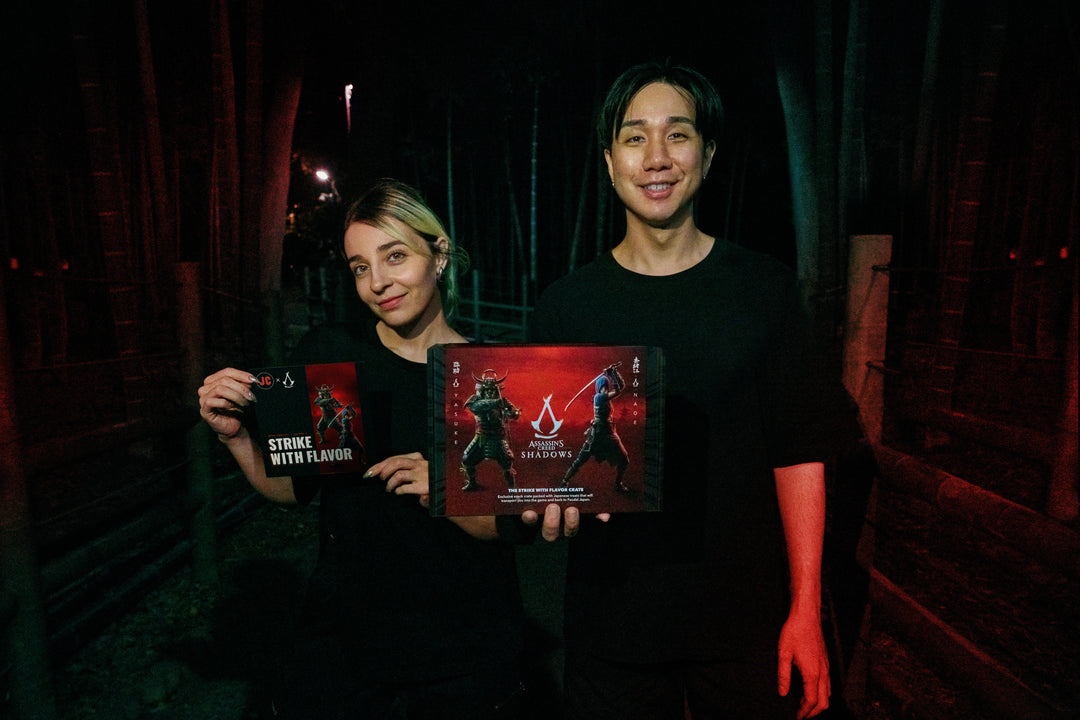Why Does Ramune Have a Marble?
Although the summers in Japan are hot and sunny, they are also jam-packed with enjoyable experiences and activities. The best time to visit Japan is during the summer, especially if you enjoy being outside. The seasonal foods and beverages that are best or are only available during the summer months are another reason to go. In Japan, when you inquire about ramune and what it represents to a person, you are likely to be regaled with tales of summer festivals and childhood experiences. Read on and learn more about the bizarreness of the ramune soda.
What are Ramune Soda Drinks?

Ramune is a sweet treat and a beverage. The beverage was introduced in 1884 and is now among Japan's most well-liked carbonated beverages. Although it comes in a distinctive codd-neck container that keeps the drink bubbly, it is very similar to the Coca-Cola of Japan. The original purpose of marble soda was to fight cholera. It was a sweet, lemon-lime medical beverage. This name pays homage to the marble-filled Codd-neck bottle. It eventually gained the name Ramune, which is lemonade in Japanese. The fact that Ramune drink is still in demand today despite having been produced decades ago makes it so special. There are more than 30 flavors, including strawberry, orange, blueberry, banana, and more.
What does Ramune taste Like?

Ramune is a carbonated sweet drink with sugar and flavors of lime and lemon. It was originally produced with lemon and cider flavors, but because cider uses lemon-based flavors, over time, these two flavors have become practically invisible. A sip of ramune lemon soda will quench your thirst since it has the ideal balance of carbonated and frizzy texture. Due to its zesty flavor, which perfectly captured the essence of a summer day, the lemon-lime flavor elevated the brand to new heights. When the weather is hot and muggy, this drink is ideal. With only one sip, the aftertaste has a noticeable citrus flavor and a tinge of lemon water sweetness.
Furthermore, the beverage offers a healthier alternative to conventional soda drinks with just 10 grams of sugar. Less sugar implies fewer calories consumed, which helps avoid weight gain and related hazards. Additionally, it aids in preventing metabolic issues, including high blood pressure. Because of its taste, amount of sugar, and nutritional value, Original Ramune is superior to ordinary soda.
History of the Ramune Marble Soda

Japanese soda is known for its ramune flavor. Children and adults alike have adored and savored this delectable Japanese "lemonade" for more than a century in Japan. Ramune was originally developed in London, England, in 1872. Hiram Codd (1838–1887), an inventor and businessman, had just created and patented the Codd Neck Bottle, a chic glass bottle that safely enables the user to stop liquid leakage with the use of a glass marble. Codd's creation was immediately followed by the creation of the first ramune by Scottish-born pharmacist Alexander Cameron Sim in the Japanese city of Kobe in 1884.
In addition, the name Mabu Soda, derived from the English word "marble soda," was given to the first ramune. When Mabu Soda was distributed, Codd's signature bottle was employed, and the fact that the marble inside the ramune carbonated drink had to be moved to access the liquid turned out to be a selling point for the beverage. The beverage eventually acquired the name ramune, derived from the Japanese phonetic spelling of the term lemonade, because of its traditional lemon-lime flavor and recognizable bottle design. Nowadays, this popular soft drink remains as one of the most popular local Japanese carbonated drinks available even at the western world market.
Ramune Codd Neck Bottle Design

The distinctiveness of Ramune bottles is mainly because of their design. These soda drinks, often known as "marble soda," were widely consumed. A Ramune is a flavor-infused water bottle with a distinctive and distinctive design that features a tight waist around 3/4 of the way up the bottle's length and a glass marble that is initially attached to a rubber ring at the mouth of the bottle. Although it was originally sold in glass bottles, you can now also get it in 250mL PET plastic bottles. The marble's function is to keep the carbonation inside the codd-necked bottles. The marble is forced into the bottle's opening by the pressure created by the carbonation, and as a result, the bottle remains sealed until it is opened.
How to Open Ramune Bottles?

The first thing you notice about ramune is its characteristic bottle shape, which can be constructed of glass or plastic. It has a unique design that is thin and round, narrowing near its neck's base. However, their admiration for the design will rapidly transform into bewilderment and annoyance when they try to open a bottle of ramune and discover it doesn't have a typical bottle cap.
So, to open the ramune bottle, the plastic cap covering the bottle's top-mounted opener must first be removed. Then you press down on the bottle mouth with the opener to keep the beverage from fizzing over. Don't worry if you don't get it correctly the first time. Ramune has regularly spilled when being opened, covering beginners' hands. With enough practice, you will ultimately be able to open these bottles like a pro. However, you will undoubtedly be interested to learn what accidentally fell into the bottle the first time.
What is the Marble in Ramune Soda Made of?

In Ramune, the marble ball is used to maintain the beverage's carbonation. When you purchase the beverage, the marble stays at the top of the bottle. There is no risk of the marble slipping into your mouth after this because it doesn't move around much. The marble in Ramune is typically made of glass, but occasionally you'll find one in a bottle made of plastic or another hard substance. Additionally, the marble is meant to survive for a long time and withstand many months or years on the shelf before being tampered with because its sole purpose is to keep the soda bottle sealed until it is ready for consumption.
The glass construction of the marble allows it to endure the abrupt shift in pressure and force without shattering or breaking off into smaller glass shards that can contaminate the soda because it will need to be pushed down with the plastic plunger. Even as the soda pop and gets fizzy, the glass marble remains intact in a single sphere.
How to Get the Marble out of the Ramune Bottles?

Many kids will probably wish to collect the marbles in the neck bottles of Ramune because they can turn into a fun keepsake that they can use in games or just keep as a souvenir. Fortunately, there is a method for removing the marble from a single soft drink bottle. Never attempt to crush the bottle since the risk of flying glass shards outweighs the advantage of rapidly collecting the marble. The issue is that the traditional glass Ramune bottle is very tightly sealed. A choking hazard would result from the marble falling out of the cap; hence it is pre-sized to prevent this from happening.
Take a little hacksaw and a flathead screwdriver. You should use the hacksaw to make a tiny cut in the plastic cap by inserting the top of the blade into the top of the bottle. Make a cut around the top and outside the plastic top. By doing this, you can break the plastic lid cap's seal. Use some muscle power and move your arm around; the cap should come off very easily. The stone will be able to tumble out of the bottle after the green cap is taken off. Take the same two tools from previously and make the same cuts in aluminum-topped bottles because metal is typically rather soft and shouldn't require a very sharp saw blade to make the cuts.
It's Japan Crate Time!
The sound of the glass marble clinking against the bottle as you drink this soda is as synonymous with warm summer nights as the crackle of fireworks. In Japan, even the hue of a ramune bottle can evoke strong feelings of nostalgia. Ramune is well-liked by kids, but it's also a favorite among adults seeking a taste of summer. Moreover, ramune soda is frequently purchased and sold at summer festivals, and it has come to symbolize these special occasions for many Japanese people. So, while visiting Japan, why not sip some ramune and make some of your own summery memories?
Luckily, you don't have to search further to purchase Ramune. You just need to visit the Sugoi Mart ramune collection. Perhaps, you want to receive a monthly box of Japanese authentic items? Japan Crate can give you that; you only need to sign up for our subscription plans here. Get your first box today! Enjoy.
Author Bio







Leave a comment